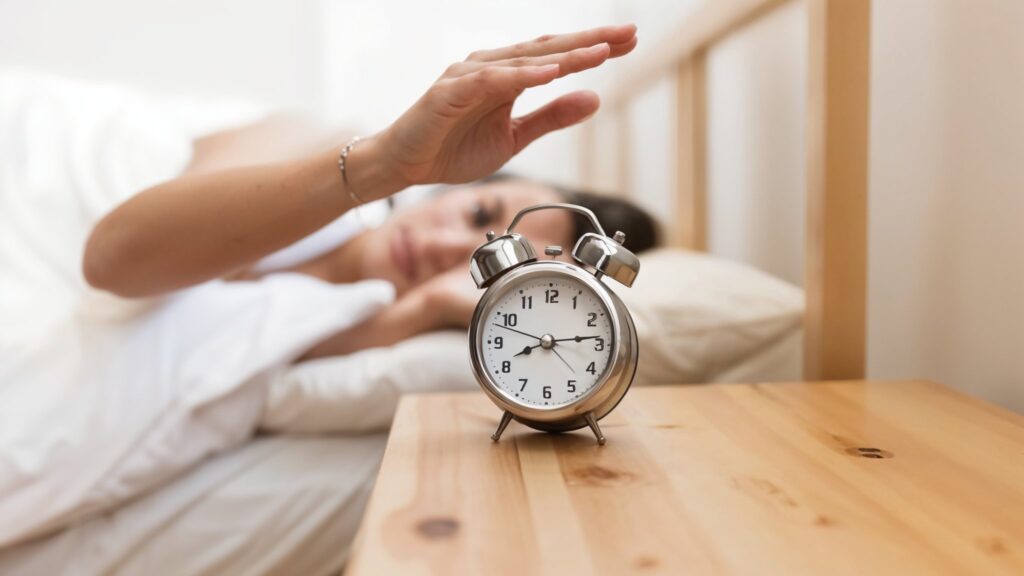A single drip, creek, or distant hum is all it takes to pull light sleepers out of slumber. Chronic night‑time noise fragments deep‑sleep stages, raising next‑day fatigue and irritability. The good news? You don’t need full‑scale remodeling to hush the house. Here are five quick, evidence‑backed fixes you can put in place this week.
1. Mask Random Sounds with White Noise
Why it works: White noise delivers a steady sound blanket that makes sudden peaks—like a neighbor’s car door—less jarring. Studies show white noise drops time‑to‑sleep by up to 38 minutes in noisy settings. Check out the science behind white noise benefits for better rest.
How to set it up:
- Pick the right device. A mechanical fan generates broad‑spectrum sound. Digital machines add nature or pink‑noise options that some ears find softer.
- Position smartly. Place the unit near the doorway to block hallway chatter or shared‑wall noise.
- Mind the volume. Aim for under 50 dB—roughly the hum of a refrigerator—to avoid hearing damage.
2. Hang Sound‑Absorbing Curtains
Why it works: Thick, multilayer curtains soak up high‑frequency street noise and echo from bare walls. Lab tests on sound‑absorbing curtains reveal up to a 10‑dB reduction in mid‑range frequencies—the most common band for traffic.
DIY steps:
- Measure twice: extend rods 20 cm past each window edge for full coverage.
- Choose triple‑weave or velvet panels at least floor‑length.
- Seal light gaps with magnetic side strips or Velcro to block both light and sound leaks.
3. Seal Window & Door Gaps with Weatherstripping
Small cracks funnel in surprising decibels. A bit of weatherstripping tape—costing less than a coffee—can shave off 3–5 dB:
- Foam tape for window sashes
- Rubber gaskets for door frames
- Door sweeps to close under‑door gaps
Tip: Use the flashlight test—shine a light from outside; any ray that sneaks in needs sealing.
4. Silence the Bed Itself
A squeaky frame won’t wake the neighborhood, but it can break your own slow‑wave sleep. Follow this three‑minute fix from mattress platform maintenance guides:
- Tighten all bolts with a hex key.
- Add felt pads between wooden slats and frame rails.
- Sprinkle a dash of baby powder where wooden parts rub; the starch lowers friction squeaks.
If noise persists, place rubber furniture cups under each leg to dampen floor vibration.
5. Keep Emergency Earplugs on Standby
For nights when the upstairs party catches you off guard, high‑NRR foam plugs knock down roughly 30 dB. Research on foam earplugs and sleep quality confirms deeper stage‑3 sleep in hospital environments when plugs are paired with an eye mask. Insert plugs gently—roll, pull, hold—so they expand inside the ear canal without discomfort.
Bonus Tips to Strengthen Quiet Time
- Evening appliance curfew: Run the dishwasher or laundry just after dinner, not at 11 p.m.
- Soft‑close hardware: Install slow‑close hinges on kitchen cabinets to stop midnight bang‑raids.
- Rug runners in hallways: Dense fibers absorb foot‑step echoes along hardwood corridors.
When Household Noise Hides a Bigger Issue
Persistent nocturnal wake‑ups sometimes stem from internal noise—namely, loud snoring or choking that points to sleep apnea. If the room is quiet but mornings bring headaches or heavy fatigue, consider screening for hidden airway problems.
- Step 1: Fill out the eight‑question STOP‑Bang survey (free and quick).
- Step 2: Take our 60‑second AI facial scan to flag craniofacial risk markers for obstructive sleep apnea.
- Step 3: Share results with a sleep specialist who can arrange an at‑home sleep test if needed.
Key Takeaways
- White noise masks sudden spikes; curtains and weatherstripping block exterior sound.
- A silent bed frame plus standby earplugs tackle interior squeaks and surprise noise.
- Simple, low‑cost upgrades cut night‑time decibels without renovation headaches.
- If wake‑ups persist despite a quieter room, rule out snoring‑related sleep disorders with quick screening tools.
Ready to uncover whether hidden airway issues—not just household noise—are stealing your rest? Start our free AI facial scan now and map out your next step toward steady, silent nights.







